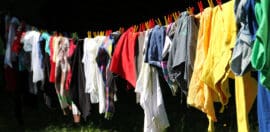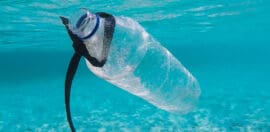Corporate Brings STEM Program to Disadvantaged Students

28 March 2017 at 4:09 pm
Disadvantaged students in low-socioeconomic communities will have access to evidence-based STEM education resources through a new corporate partnership.
Social Ventures Australia (SVA) has partnered with Samsung to create the STEM Learning Hub, a new initiative designed to boost science, technology, engineering and maths learning in schools with the greatest need.
The hub is the latest part of SVA’s broader Bright Spots Schools Connection program, which supports school leaders in high-performing but disadvantaged schools to improve the outcomes of their students with a view to spread those learnings across the education system.
Suzanne Cridge, the program’s director, told Pro Bono News students from disadvantaged backgrounds faced “appalling” education barriers, especially in STEM.
“We know from PISA data [an international student assessment] that a young person in the lowest demographics of SES [socioeconomic status] is in fact five times more likely to be not proficient… in numeracy and literacy than a young person who is in the top demographic,” Cridge said.
“That’s really appalling and really speaks to the equity issue.
“We know that particularly in maths and science there’s again quite a gap in terms of equity of outcomes for a young person by the age of 15 in skills and proficiencies.”
According to SVA, these children are less likely to develop their talent in science and maths, and access the high-growth STEM and related jobs in the future.
It’s expected as many as 75 per cent of occupations will require STEM skills and knowledge.
The STEM Learning Hub will work with the 48 schools across three states currently involved in the Bright Spots program, offering professional development, and STEM training and resources.
The hub marks the first time SVA has partnered with a corporate as part of Bright Spots.
“Samsung has come on board as a great partner, with a particular interest in the STEM learning opportunities for disadvantaged young people,” Cridge said.
“Samsung has interest in ensuring that Australia has a great future workforce with great STEM skills, and in effect they’re giving us the resource support… to work with a dedicated group of schools that will start building the innovation and thinking and evidence in STEM teaching and learning for low-SES schools.
“So what are the best practices in STEM teaching and learning for low-SES school communities… and how can we grow them, learn from them and spread the evidence based around them.
“The issue being frankly that we’re moving from a resource-driven economy to an innovation, futures economy and we need to think smart around equipping our young people for that future workforce skill set and opportunities.”
She said the program’s evidence-based focus would support other schools to bridge the education gap.
“What we’re anticipating is if we can help schools be more effective in delivering high-impact learning opportunities for young people we can help and assist the systems to close that equity gap,” she said.
“We can all move faster and more efficiently and effectively if we have access to great evidence to help us make decisions about what will have the biggest impact.
“For school leaders that’s been a really tricky thing because school leaders aren’t necessarily given lots of time nor access to great synthesized evidence. So what we’re able to do is help them not only access the evidence but use the evidence to move faster and more efficiently and effectively for impact.”
Gail Doney is the principal at Wallarano Primary School in Victoria, one of the schools involved with Bright Spots.
“We cater to children with a variety of different needs, including a high proportion of EAL [English as an additional language] learners and children from generational poverty.
“But they are all just as talented, passionate and smart as the next child, they just need the chance to shine. This partnership gives our children opportunities they wouldn’t normally have and helps them to develop a goal for the future.”







